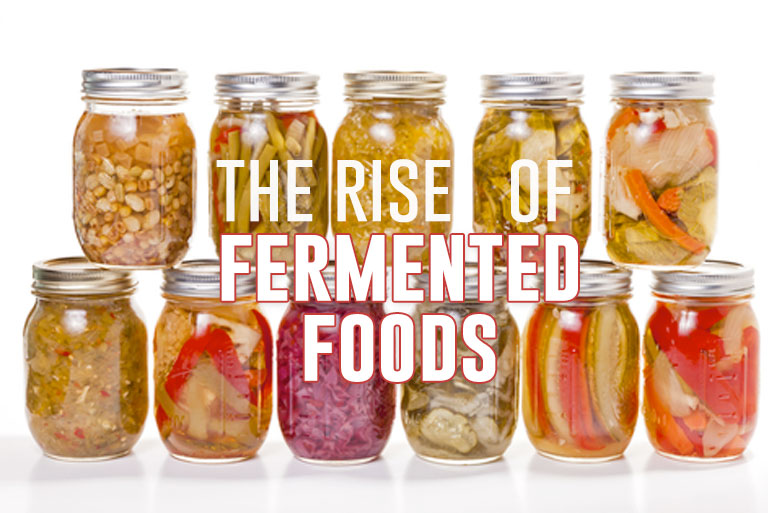A huge trend we are seeing is that of fermented foods and the various health benefits that they offer (especially in regards to a healthy gut and digestion). When our team brought up this topic at a brainstorming session, I will have to admit, I didn’t know much at all about fermented foods, let alone the benefits they offer.
A little background information, fermented foods are an amazing source of probiotics, you know, those trillions of teeny creatures that live in our bodies. These are good bacteria that are known to improve digestion, boost immunity and some studies even show that they assist in helping us get leaner. Research is still in early stages of this new movement, but it is looking very promising in regards to the benefits.
Fermented foods are foods that have been through a process of lactofermentation in which natural bacteria feed on the sugar and starch in the food creating lactic acid. This process preserves the food, and creates beneficial enzymes, b-vitamins, Omega-3 fatty acids, and various strains of probiotics. Natural fermentation of foods has also been shown to preserve nutrients in food and break the food down to a more digestible form. This, along with the bevy of probiotics created during the fermentation process, could explain the link between consumption of fermented foods and improved digestion.
Cultures around the world have been eating fermented foods for years, from Sauerkraut in Germany to Kimichi in Korea and everywhere in between. Sadly, with the advances in technology and food preparation, these time-honored traditional foods have been largely lost in our society.” (http://wellnessmama.com/2245/health-benefits-fermented-foods/)
Now the big question – what are these fermented foods? Here is a list to help you get started.
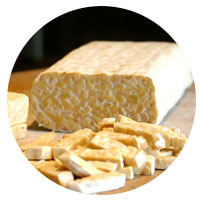
- Tempeh – tempeh is made from naturally fermented soybeans. It is a completely vegetarian protein with a slight nutty flavour. It’s chalked full of probitotics and amino acids. Some popular ways to add tempeh to your diet is in salads, soups, pastas, etc. It is similar to tofu (and contains more protein) and can be found at most health food stores in the refrigerated section.
2. Miso – miso is a bold tasting fermented paste made from barley, rice or soybeans. It adds a umami flavour to dishes and you only need a very small amount (which is good because it’s high in sodium). It is often used in Asian cooking as a glaze, in soups, stirfry, etc. It can be purchased in the refrigerated section from most large grocery stores.
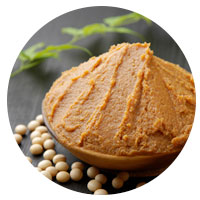
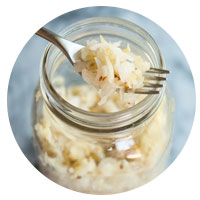
3. Sauerkraut – one of the more common fermented foods in the Western world, sauerkraut is made from cabbage and salt. It is often used as a condiment with a variety of foods and it delivers a high dose of probiotics and fibre. It can be purchased at any grocery store or easily made at home.
4. Yogurt – Specifically yogurt labelled with “live and active cultures” guarantees 100 million probiotic cultures per gram at manufacturing time. Yogurt can be purchased pretty much anywhere and is an easy addition to any diet.

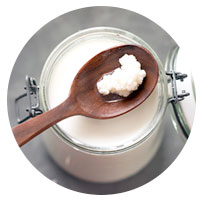
5. Kefir Milk – This fermented milk drink tastes a but like a drinkable yogurt and is full of calcium and probiotics. It is often added to smoothies, as a cheese, as an alternative to yogurt or just drank on its own. You can make kefir milk easily in your own home or purchase it at a health food store.
6. Kefir Water – Similar to Kefir milk, but made with kefir grains added to sugar water, juice or coconut water. This beverage can be highly customized to be carbonated, flavoured with fruit, juice or other flavourings. It is drank on it’s own as a beverage and can be easily made in your own home. It offers a high level of probiotic cultures and is really easily added to your diet.
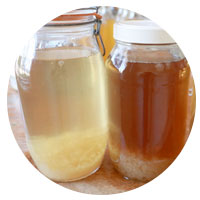

7. Kombucha – a type of black or green tea drink made from fermenting tea. It is tangy and effervescent and often flavoured with herbs or fruit. It can be found in natural food stores as well as at some farmer’s markets.
8. Kimchi – Kimchi is very similar to Sauerkraut, but hails from Korea. It is a spicy fermented cabbage that is used often in Asian cooking or as a condiment. It can be found in the refrigerated section near pickles/sauerkraut or in the Asian section.


